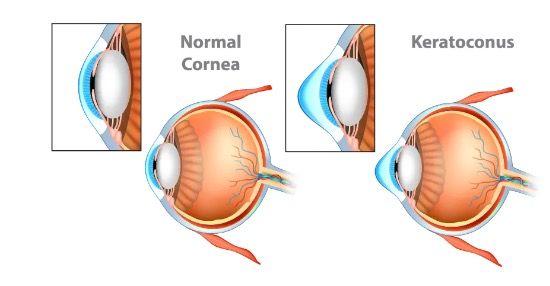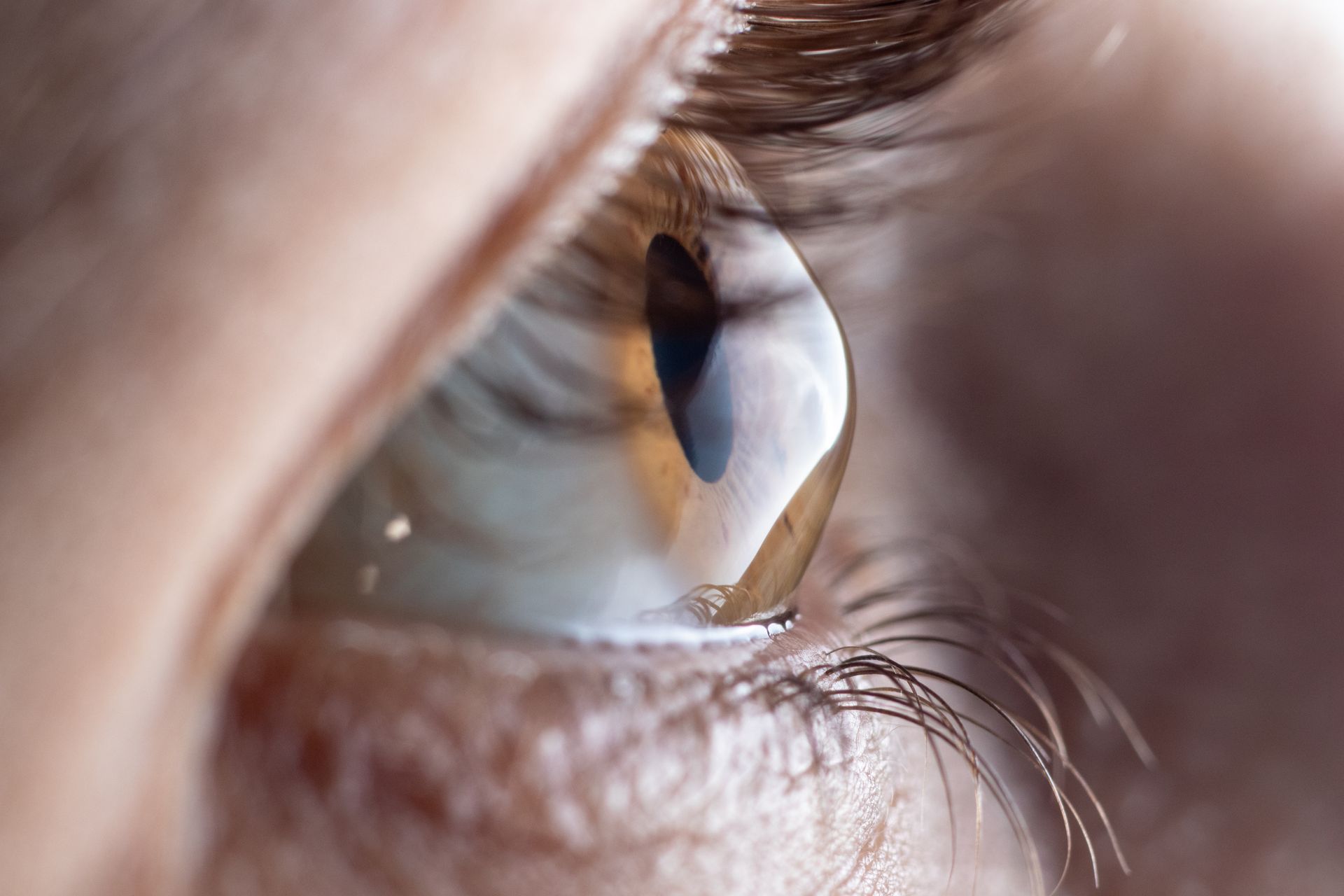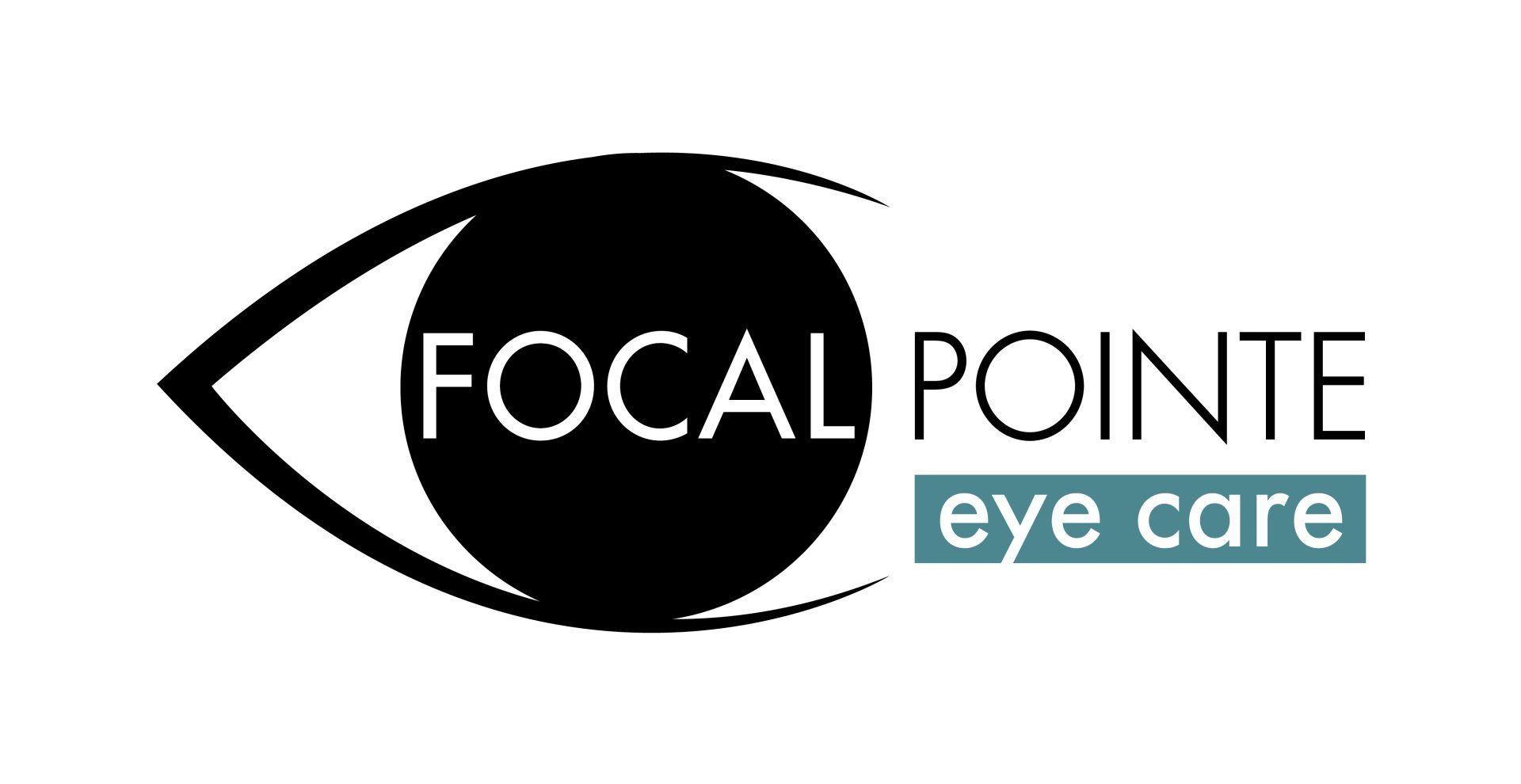WHAT IS KERATOCONUS?
Keratoconus is a condition where the clear, dome-shaped surface on the front of your eye (the cornea) thins out and bulges into a cone shape.
As the cornea changes shape it changes the way light rays are focused on the retina. This results in blurry or distorted vision.
Keratoconus often begins in the teenage years or early twenties and can progress slowly over time.

WHAT CAUSES KERATOCONUS?
In individuals with keratoconus, the collagen fibers within the cornea weaken, leading to an inability to maintain the natural shape of the cornea.
The exact cause for this condition remains unknown, but it is thought to be linked to:
Age
Keratoconus typically starts in the late teenage years, with symptoms progressing gradually over 10 to 20 years. Although it can appear earlier in childhood or after age 40, developing keratoconus at these times is much less common.
Eye rubbing
Vigorous eye rubbing can scratch or damage the cornea, leading to further thinning. Additionally, eye rubbing has been associated with the accelerated progression of keratoconus.
Chronic Eye Inflammation
Chronic inflammation from allergies or irritants can contribute to the breakdown of corneal tissue and may result in developing keratoconus.
Ultraviolet Light
Excessive exposure to the sun's UV rays can make the cornea more vulnerable to oxidative damage. This is believed to contribute to the development or worsening of keratoconus.
Genetics
In addition to a family history of keratoconus, individuals with certain systemic disorders, such as Down syndrome and Ehlers-Danlos syndrome are at a higher risk of developing the condition.
KERATOCONUS SYMPTOMS
- Blurry or distorted vision
- Sensitivity to light and glare
- Rapidly changing eyeglass prescriptions
- Difficulty wearing or fitting contacts
- Redness or swelling of the eyes

TREATMENT OPTIONS FOR KERATOCONUS
Treatment for keratoconus depends on the severity of your condition and how quickly the condition is progressing. The goal of treatment is to slow the progression of the disease and to improve your vision.
Glasses and Contacts
In the early stages of keratoconus, your vision can often be corrected with glasses or soft contact lenses.
As keratoconus progresses, specially fitted contacts might be needed to provide better vision. These lenses include gas permeable lenses, hybrid lenses or scleral lenses.
Scleral Contact Lenses
For most people with keratoconus, a scleral lens is the best treatment option for better vision. A scleral lens is a large-diameter gas permeable lens designed to cover the entire cornea and rest on the less sensitive part of the eye called the sclera. This design creates a smooth refracting surface and minimizes discomfort by reducing pressure on the cornea.
Scleral lenses feature a fluid layer that helps keep the eye hydrated. This fluid layer also smooths out any irregularities in the shape of the cornea, improving vision.
Corneal Cross-Linking
Corneal cross-linking is a procedure that is very effective in slowing the progression of keratoconus. In this procedure, your doctor uses special eye drops and UV light to strengthen the cornea and prevent further bulging.
Corneal Transplant
In a few patients with keratoconus, the cornea will eventually become too scarred or wearing contact lenses will become too difficult. For these people, corneal transplant surgery may be needed.
If you have any of the symptoms mentioned above or know you have keratoconus and need specialized care, don't hesitate. Schedule an appointment with Focal Pointe Eye Care today for a thorough eye examination and to explore the best treatment options for you. Your eye health is our priority! 513-779-3937

